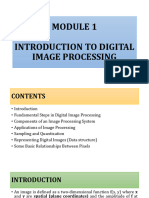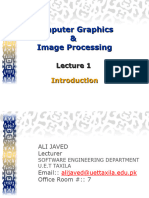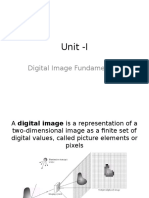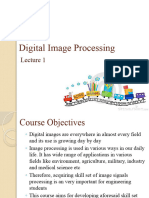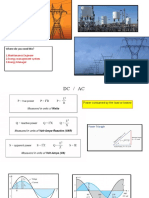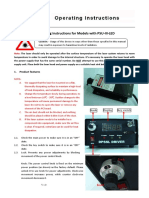0% found this document useful (0 votes)
15 views70 pagesLecture 2 Image Formation
The document outlines the topics covered in Lecture No. 2 of a course on Image Processing and Computer Vision, including the history of image processing, fundamental steps in digital image processing, and the basics of image representation. It discusses the human vision system's limitations and the differences between analog and digital images. Key stages in digital image processing such as acquisition, enhancement, restoration, and segmentation are also highlighted.
Uploaded by
syedafatimajaffer3Copyright
© © All Rights Reserved
We take content rights seriously. If you suspect this is your content, claim it here.
Available Formats
Download as PPTX, PDF, TXT or read online on Scribd
0% found this document useful (0 votes)
15 views70 pagesLecture 2 Image Formation
The document outlines the topics covered in Lecture No. 2 of a course on Image Processing and Computer Vision, including the history of image processing, fundamental steps in digital image processing, and the basics of image representation. It discusses the human vision system's limitations and the differences between analog and digital images. Key stages in digital image processing such as acquisition, enhancement, restoration, and segmentation are also highlighted.
Uploaded by
syedafatimajaffer3Copyright
© © All Rights Reserved
We take content rights seriously. If you suspect this is your content, claim it here.
Available Formats
Download as PPTX, PDF, TXT or read online on Scribd
/ 70











